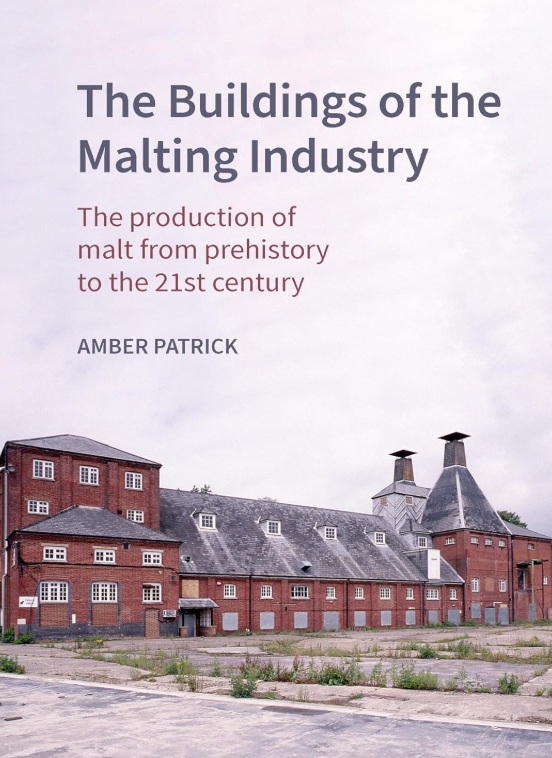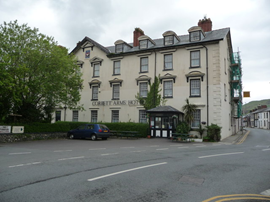The Buildings of the Malting Industry

|
| The Buildings of the Malting Industry, Amber Patrick, Historic England/Liverpool University Press, 2023, 204 pages, black-and-white and colour illustrations. |
Cereals have been subjected to the malting process since earliest times and malthouses and kilns sprung up across all counties in England. These have been traced and researched over decades by Amber Patrick, who compiled a major report for English Heritage (2004) and has now produced a definitive account of this once ubiquitous building type.
At the height of the industry’s activity from the late 1800s and up to around 1960, maltings towered above their surroundings in town and country, either next to the breweries they supplied or in the proximity of the fields of barley that provided the principal raw material. The east of England predominated, due to its dryer climate, but other factors such as access to road, rail or rivers and coastal transport were of economic importance. The malting process also depends on supplies of heat, and the Trent valley and coal-rich counties such as Nottinghamshire feature prominently in the book, together with Burton, the legendary home of British brewing in which four major maltings are identified. Strangely, Hertfordshire has been left out of the index, as has Ipswich, the former home of R and W Paul, maltsters, and the large breweries nearby.
Unpublished reports on individual sites are incorporated in the book, recording malthouses either demolished or retained in recent decades after becoming redundant. As the UK brewing industry underwent changes, many of its sites came under threat. Conversions to housing, storage or cultural uses are described, such as the famous Snape Maltings, Suffolk, where the extensive flat floor surfaces were adapted by Arup Associates and opened in 1967.
Before the industry had grown up and produced buildings as gigantic as Bass’s Sleaford Maltings (1906), it operated on a smaller scale. Malting and brewing were initially conducted at home or in micro-breweries attached to the inns they supplied. For these early times we are reliant primarily on Gervase Markham, author of The English Housewife (1615), which is referenced several times by Patrick in her intriguing second chapter on the 1500-1600+ era. In his book, Markham writes a chapter on malt, another on oats and a third on brewing. Alongside this source is Patrick Grattan’s Oasts and Hop Kilns (see Oasts and Hop Kilns: a history), where hops are thoroughly analysed for their own contribution. Will anyone now write about water? This is the third main ingredient, and no brewery in town or country could get by without a supply of water, preferably of the right quality.
Grattan and Patrick have given us two worthwhile volumes for the benefit of archaeologists, planners, architects and conservationists, and for other readers who might agree with Ogden Nash: ‘malt can do more than Milton will to justify the ways of God to man.’ In John Milton’s defence, he did write in praise of the ‘spicy, nut-brown ale’, for use on long winter nights, just as Markham calls beer ‘the very substance of all entertainment… by which the whole household is nourished and sustained.’ The two books thus place both malt and hops at the centre of social and economic history during vital phases of the nation’s development. The attractions of a good inn for travellers would include an efficient malthouse with brewery and cellar in-house, to provide its clients with the means of passing the evening pleasantly.
This article originally appeared as ‘Ubiquitous maltsters’ in the Institute of Historic Building Conservation’s (IHBC’s) Context 181, published in September 2024. It was written by Graham Tite, a member of the Brewery History Society.
--Institute of Historic Building Conservation
Related articles on Designing Buildings Conservation.
IHBC NewsBlog
Images from inside a Grade II listed hotel show the scale of its collapse
The Corbett Arms in Tywyn has fallen into serious disrepair.
Old Sarum fire in listed (& disputed) WW1 Hangar - Wiltshire Council has sought legal advice after fire engulfed a listed First World War hangar that was embroiled in a lengthy planning dispute.
UK Antarctic Heritage Trust launches ‘Virtual Visit’ website area
The Trust calls on people to 'Immerse yourself in our heritage – Making Antarctica Accessible'
Southend Council pledge to force Kursaal owners to maintain building
The Council has pledged to use ‘every tool in the toolbox’ if urgent repairs are not carried out.
HE’s Research Magazine publishes a major study of the heritage of England’s suburbs
The article traces the long evolution of an internal programme to research 200 years of suburban growth
IHBC Context 183 Wellbeing and Heritage published
The issue explores issues at the intersection of heritage and wellbeing.
SAVE celebrates 50 years of campaigning 1975-2025
SAVE Britain’s Heritage has announced events across the country to celebrate bringing new life to remarkable buildings.
IHBC Annual School 2025 - Shrewsbury 12-14 June
Themed Heritage in Context – Value: Plan: Change, join in-person or online.
200th Anniversary Celebration of the Modern Railway Planned
The Stockton & Darlington Railway opened on September 27, 1825.
Competence Framework Launched for Sustainability in the Built Environment
The Construction Industry Council (CIC) and the Edge have jointly published the framework.














